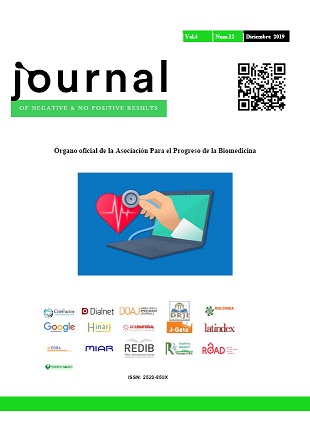Navigation and history of science: Day of infamy. Sanitary assistance during the attack on Pearl Harbor
DOI:
https://doi.org/10.19230/jonnpr.3063Keywords:
Attack on Pearl Harbor, sanitary assistance, rescue, naval medicineAbstract
In the context of World War II (1939-1945), the attack on Pearl Harbor was carried out by the Japanese Imperial Navy against the United States naval base in Pearl Harbor (Hawaii). It happened on the morning of Sunday, December 7, 1941.
US Navy medicine was represented at Pearl Harbor by a Naval Hospital, a partially assembled mobile hospital and the USS Solace (AH-5), the Navy's most modern hospital ship. Burns, compound fractures, flesh wounds (gunshots, shell, and shrapnel), and penetrating abdominal wounds were the most frequent problems. Sixty percent of all casualties at Pearl Harbor were burn cases caused by burning fuel oil and/or flash burns. Most burns were extensive (up to 80 percent), and mainly first and second degree. Nineteen neuropsychiatric (shell shock) cases were reported at Naval Hospital Pearl Harbor.
This article tries to offer an overview of the heroic health care carried out in those conditions of surprise and horror.
Downloads
References
Yasminay M. La lección de Pearl Harbor. Tus poemas poesías. 23 de mayo de 2011. Disponible en: http://tuspoemaspoesias.blogspot.com/2011/05/la-leccion-de-pearlharbor.html
Morgenstern G. Pearl Harbor. The Story of the Secret War. New York: The Devin-Adair Company; 1947.
Leguineche M. Recordad Pearl Harbor. Madrid: Temas de Hoy; 2001.
LIBRARY. Library of Congress. Speech by Franklin D. Roosevelt, New York (Transcript). Disponible en: https://www.loc.gov/resource/afc1986022.afc1986022_ms2201/?st=text
Dale J. Pearl Harbor: Los hombres que no pudieron (o quisieron) detener el ataque. Diario La Vanguardia, 07 de diciembre de 2016.
Wallin HN. PEARL HARBOR: Why, How, Fleet Salvage and Final Appraisal. United States Government Printing Office: Washington: 1968.
Pearl Harbor Navy Medical Activities. The United States Navy Medical Department at War, 1941-1945, vol. 1, parts 1-2. Washington: The Bureau; 1946.
Herman J. Battle Station Sick Bay: Navy Medicine in World War II. Annapolis, MD: Naval Institute Press; 1997.
Arakaki LR, Kuborn JR. Medical memories from Dec. 7, 1941: Attack on Pearl Harbor. AIR FORCE MEDICAL SERVICE, December 07, 2017.
Salas PM. Investigación de la enfermería militar vista a través del cine: el caso de Pearl Harbor. Cultura de los Cuidados 2005;18:11-18.
Eckert GA, Mader JW. The Solace in Action. Naval Medical Bulletin 1942;3:552-7.
Ravdin IS, Long PH. Some Observations on the Casualties at Pearl Harbor. Naval Medical Bulletin 1942;2:353- 8.
Crowhurst JA. The legacy of the anaesthesia ‘events’ at Pearl Harbor, 7th December 1941. Journal of Military and Veterans’ Health 2015;48:85-95.
Fox AG. Pearl Harbor Nurses: The women who cared for the wounded. Pearl Harbor Warbirds 2017;27.
Published
Issue
Section
License
All accepted originals remain the property of JONNPR. In the event of publication, the authors exclusively transfer their rights of reproduction, distribution, translation and public communication (by any sound, audiovisual or electronic medium or format) of their work. To do so, the authors shall sign a letter transferring these rights when sending the paper via the online manuscript management system.
The articles published in the journal are freely used under the terms of the Creative Commons BY NC SA license, therefore.
You are free to:
Share — copy and redistribute the material in any medium or format
Adapt — remix, transform, and build upon the material
The licensor cannot revoke these freedoms as long as you follow the license terms.
Under the following terms:
Attribution — You must give appropriate credit, provide a link to the license, and indicate if changes were made. You may do so in any reasonable manner, but not in any way that suggests the licensor endorses you or your use.
NonCommercial — You may not use the material for commercial purposes.
ShareAlike — If you remix, transform, or build upon the material, you must distribute your contributions under the same license as the original.
No additional restrictions — You may not apply legal terms or technological measures that legally restrict others from doing anything the license permits.

This work is licensed under a Creative Commons Attribution-NonCommercial-ShareAlike 4.0 International License

























